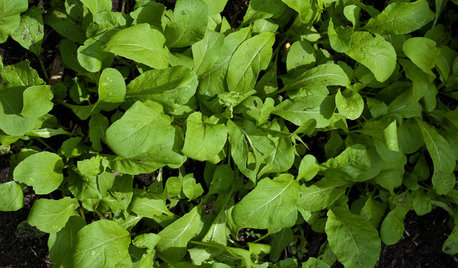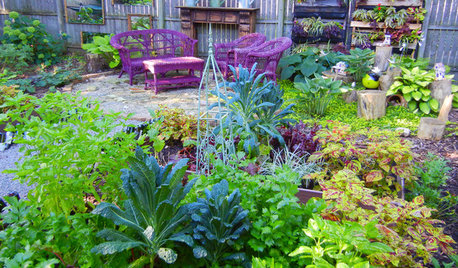EC Table for Vegetables
djkswiss
15 years ago
Related Stories

COOL-SEASON CROPSCool-Season Vegetables: How to Grow Salad Greens
From arugula to radicchio, greens have taken a top spot on the table and in fall and winter gardens. See how to start growing them now
Full Story
GARDENING GUIDESShades of Vegetable Gardens: Growing Edibles in Less Sun
See how one gardener produces a veritable feast of vegetables and herbs under a canopy of shade
Full Story
SHOP HOUZZShop Houzz: Up to 70% Off Vegetable and Herb Garden Essentials
Stock up on everything to plant a spring garden brimming with produce
Full Story0

KITCHEN DESIGNKitchen of the Week: Rustic Space Opens to Herb and Vegetable Gardens
Well-chosen recycled and repurposed features create a North Carolina cottage kitchen with a distinctive look and personality
Full Story
FARM YOUR YARDCool-Season Vegetables: How to Grow Lettuce
Leaf, butterhead, crisphead or romaine — lettuce is best harvested in the cool weather of spring and fall
Full Story
12 Vegetable Peelers to Make Quick Work of Your Garden Bounty
Steel yourself: These ergonomic and modern-looking tools bear little resemblance to the one-note peelers of the past
Full Story
FARM YOUR YARDAdvice on Canyon Farming From L.A.'s Vegetable Whisperer
See how a screened garden house and raised beds help an edible garden in a Los Angeles canyon thrive
Full Story
GARDENING GUIDES11 Favorite Edibles for Your Cool-Season Garden
Plant crunchy carrots, crisp radishes, tender peas and other vegetables for fall and spring harvests
Full Story
EDIBLE GARDENSGarden BFFs? Why Your Vegetables Are Begging for Companion Plants
Foster friendships among plants for protection from pests, pollination support and color camaraderie
Full Story
FARM YOUR YARD9 Ways to Change Up Your Vegetable Garden for the Coming Season
Try something new for edible plantings that are more productive than ever
Full StorySponsored
Industry Leading Interior Designers & Decorators in Franklin County
More Discussions






freemangreens
freemangreens
Related Professionals
Allen Landscape Architects & Landscape Designers · Simpsonville Landscape Architects & Landscape Designers · Bellflower Landscape Architects & Landscape Designers · Carson Landscape Architects & Landscape Designers · Fillmore Landscape Architects & Landscape Designers · Maple Heights Landscape Architects & Landscape Designers · Salem Landscape Contractors · Bell Gardens Landscape Contractors · El Reno Landscape Contractors · Forest Hills Landscape Contractors · Methuen Landscape Contractors · San Rafael Landscape Contractors · Tyngsboro Landscape Contractors · Hawaiian Gardens Landscape Contractors · San Pablo Landscape Contractorsgreystoke
aerobobponics
freemangreens
greystoke
freemangreens
joe.jr317
willardb3
greystoke
joe.jr317
greystoke
zathras
ethnobotany
homehydro
lucas_formulas
homehydro
lucas_formulas
homehydro
homehydro
zathras
lucas_formulas
homehydro
zathras
zathras
danielfp
homehydro
zathras
zathras
danielfp
zathras